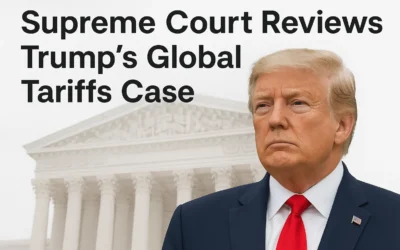China’s exports to the US crashed by 34.5% in May 2025. For example, this marks the worst decline since the COVID-19 pandemic in 2020. Moreover, a 21% drop in rare earth mineral exports this year signals big trouble for US-China trade. As a result, this crisis could undo recent progress in talks. Therefore, the global economy, American consumers, and trade stability are at risk.
The Data Shows Trouble
First, China’s exports to the US fell 35% in May. In addition, imports from the US dropped 18%. Consequently, this cut China’s trade surplus with America by 41.55% to $18 billion. Meanwhile, China’s overall export growth slowed to 4.8%, missing forecasts. Similarly, imports fell 3.4%, worse than expected. For instance, factory prices in China hit a two-year low. Thus, small exporters are struggling without tariff breaks and with weak global demand.
Importantly, rare earth minerals are vital for electric vehicles and defense equipment. However, China’s export limits on these materials worry US manufacturers. In fact, a 21% drop in rare earth exports from January to May could disrupt supply chains. As a result, this may halt production and raise costs.
A Shaky Agreement at Risk
To begin, the US-China trade war is heating up. For example, in April 2025, President Trump set tariffs as high as 145% on Chinese goods. In response, China hit back with its own tariffs and export controls. Fortunately, a 90-day truce on May 12 in Geneva brought hope. Specifically, Trump cut tariffs to 30%, and China lowered its duties to 10%. Thus, both sides planned talks to fix issues like China’s export focus and mineral restrictions.
However, the truce is crumbling. For instance, Trump says China isn’t easing rare earth export limits. On the other hand, China claims the US broke the deal by restricting AI chips and revoking student visas. In addition, the US added export licenses for ethane, a key chemical China buys. As talks restart in London, tensions are high. Notably, the US wants firm commitments on rare earths. Meanwhile, China is boosting its own supply chains and selling more to other countries—non-US exports rose 11.4% in May. Therefore, this shows China’s push to rely less on the US. However, it risks a deeper trade split.
The Impact on People and Businesses
Clearly, this trade fight hurts both sides. For example, in China, the export drop threatens millions of jobs. In fact, up to six million manufacturing jobs could vanish if US tariffs continue. Moreover, high youth unemployment and a weak housing market make things worse. In response, China’s government is offering rate cuts and a 500 billion yuan loan program. However, these may not be enough.
Similarly, in the US, fewer Chinese imports—down 20% in April—raise costs. As a result, businesses and consumers pay more. For instance, manufacturers relying on Chinese rare earths face factory shutdowns. In addition, industries like automotive and tech expect supply chain issues. Although Trump’s tariffs aim to boost US manufacturing, they’re causing higher prices and uncertainty. Consequently, the OECD warns global growth could fall to 2.9% in 2025 if trade barriers grow.
A Call to Action
Urgently, the US and China must act now. For example, the London talks are a chance to ease tensions. Importantly, Trump’s tariff pause ends in July. Thus, without progress, a full trade war could erupt and hurt the global economy.
Here’s what needs to happen:
- Talk, Don’t Fight: First, both sides must negotiate honestly. For instance, the US should be clear about rare earth needs. Likewise, China must lift export limits. Otherwise, moves like visa bans or chip controls will fuel distrust.
- Secure Supply Chains: Next, the US should find new rare earth sources with allies. Similarly, China must avoid using minerals as leverage, which could push away partners.
- Help Those Hurting: In addition, China needs to support its exporters and jobless workers. Likewise, the US should aid businesses facing high costs and supply issues.
- Work Globally: Finally, the US and China can’t fix this alone. For example, groups like the G20 must help lower trade barriers and stabilize markets.
Time Is Running Out
In conclusion, China’s export drop is a warning. Therefore, the US and China must lead, not destabilize. If they fail, economic pain and a weaker global trade system will follow. As London talks begin, the world is watching. Will they find solutions, or choose tariffs and retaliation? Ultimately, this will shape jobs, prices, and prosperity for millions. Thus, demand action and solutions—now.
Check our free tips for top investment ideas. They’re packed with value! Read more on our blog: Investment Blog.









0 Comments